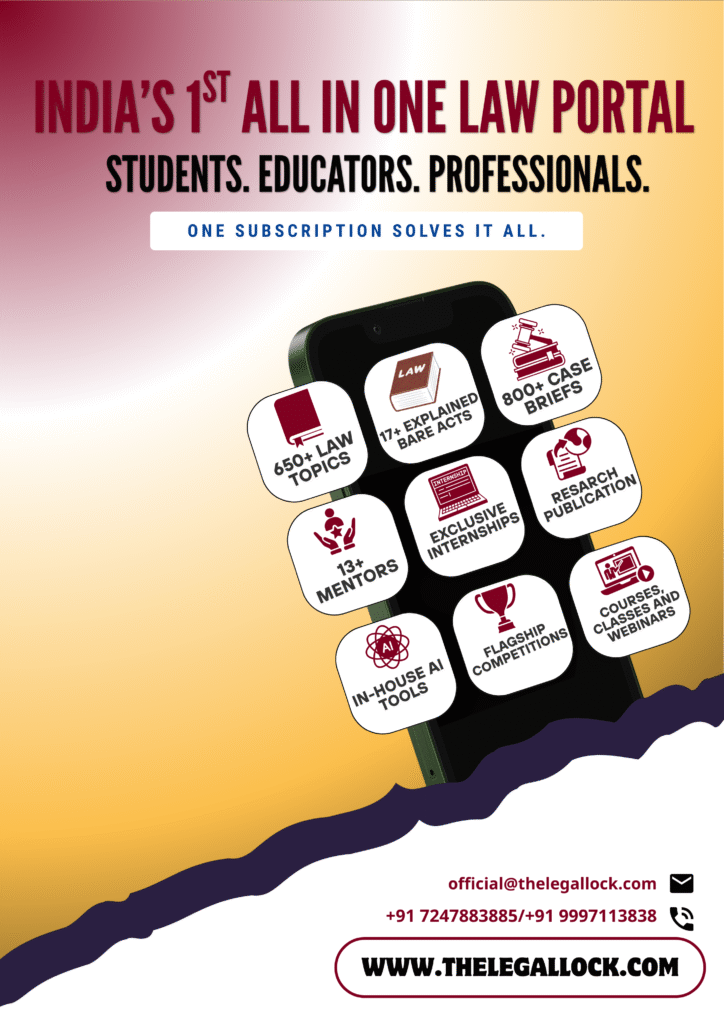Introduction
The online ecosystem is in a state of perpetual flux, and so are the regulatory frameworks that aim to promote fair competition. In a historic step, the Competition Commission of India (CCI) recently wrapped up a major settlement with Google over suspected anti-competitive behaviour in the nascent Android TV space. This is the first-ever for the CCI in this capacity, not only putting the regulator’s proactive approach in the spotlight but also setting a very important precedent for regulating digital markets in India.
The Root of the Matter: Exposing Google’s Android TV Control
The investigation against Google was initiated by complaints made by individuals, Mr. Kshitiz Arya and Mr. Purushottam Anand, accusing Google of abusing its dominant position to suppress competition in the ecosystem of Android TV. The main concern was that Google was subjecting OEMs of smart TVs to unreasonable terms, thus restricting consumer choice as well as innovation.
Google’s pervasive influence in the smartphone operating system market naturally extended to smart TVs, where Android TV OS holds a significant share. The CCI’s investigation delved into Google’s agreements with OEMs, particularly the Television App Distribution Agreement (TADA) and Android Compatibility Commitments (ACC). These agreements were found to contain provisions that allegedly constrained OEMs’ ability to freely operate and innovate.
Anti-Competitive Practices Under Scrutiny
The heart of the anti-competitive charges against Google was based on two fundamental practices including:
- Compulsory Bundling
Google was accused of requiring bundling with the Android TV OS. This involved having to pre-install a whole range of Google apps in order for an OEM to pre-install popular Google apps and services on their smart TVs. This de facto restricted the freedom of OEMs to decide which apps to pre-install and potentially harmed other app stores or services competing with Google.
- Android Forks Restrictions
One of the key issues was Google’s alleged prohibition of OEMs from creating or implementing competing “forked” versions of Android through its Anti-Fragmentation Agreements. A “forked” version of Android is an altered build of the Android Open-Source Project (AOSP) code. By limiting the applications of such forks, Google purportedly made sure that its proprietary Android TV OS was the preeminent platform, thereby curbing the development of alternative operating systems that would promote increased competition and niche offerings.
The CCI’s investigation found that such agreements were levying unfair terms on OEMs. By mandating pre-installation of the Google TV Services app bundle and barring the creation or employment of Android forks, Google was, in effect, stifling competition and innovation in the smart TV space.
The Settlement: A Way to More Equitable Practices
Google offered a settlement in light of the CCI’s findings and continuing investigations, which the CCI later accepted under Section 48A (3) of the Competition Act, 2002. This is a significant step as it is the first such order by the CCI, evidencing a trend towards regulatory settlements in competition law.
As a part of the settlement, Google vowed extensive changes in its contracts with OEMs, summarized in what is known as the “New India Agreement”. Some of the salient points of this agreement are:
- Standalone Play Store License- Google will now offer a standalone license for the Play Store and Play Services solely for Android smart TVs in India. This important shift implies that OEMs no longer have to bundle these services or accept default placement conditions, giving them more freedom in product design and pre-installed software.
- Waiver of ACC for Non-Google Devices- Waiving the requirement of a proper Android Compatibility Commitment (ACC) for non-Google devices imported into India, the settlement allows OEMs to sell and manufacture incompatible Android devices without breaching the TADA, creating a platform for other Android variants or even separate operating systems to coexist and compete.
- Settlement Amount- Under the agreement, Google agreed to pay a Final Settlement Amount of ₹20.24 crore (roughly USD 2.37 million). This figure represents a discount of 15% from the initial proposed settlement amount and suggests a negotiated agreement between Google and the CCI.
Implications and Analysis: The Dawn of a New Digital Market Era
The CCI’s Google settlement has wide-ranging implications for the Android TV ecosystem, as well as for the Indian digital ecosystem at large.
- For OEMs
The “New India Agreement” provides the smart TV makers with a fresh sense of empowerment and freedom. They are able to innovate more freely now, create differentiated user experiences, and also have the freedom to become less dependent on Google’s bundled services. This would result in a greater variety of Android TV devices, which could be advantageous for consumers through more customized choices and aggressive pricing. The potential to create non-Google Android devices also brings in prospects of specialized operating systems that provide facilities for niches or unique features.
- For Competition and Innovation
This settlement is a strong message that the CCI is dedicated to creating an even playing field in digital markets. Through its handling of bundling demands and limitations on Android forks, the CCI can stimulate healthy competition, enabling new players and other platforms to come out and excel. This, subsequently, can generate innovation as firms are motivated to differentiate and enhance their products and services in order to entice consumers. The elimination of limiting conditions allows experimentation and diversification, which is needed for a fluid technology industry.
- For Consumers
In the long run, the ultimate winners of this deal are Indian consumers. A more competitive marketplace is likely to result in a greater diversity of smart TV offerings, possibly at more competitive prices. Additionally, the greater autonomy of OEMs to innovate and customize could lead to more intuitive interfaces, improved features, and a more diverse app universe independent of Google’s direct influence.
- For the CCI and Future Regulatory Landscape
The CCI’s move to seek a settlement and its successful implementation reflect its new position as a strong regulator in the digital era. This is the first instance of the CCI having exercised its settlement powers under Section 48A, creating a benchmark for future antitrust cases. This strategy provides the prospect of a quicker and more effective mechanism for resolving competition issues, cutting down on the lengthy litigation process. It also reflects the CCI’s readiness to intervene with leading market players to bring about changes in behaviour in favour of competition, in addition to imposing fines. This may prompt other big tech firms to voluntarily audit their practices and cooperate with the regulators to stay compliant.
Critical Analysis
In the wider context, this settlement highlights a global trend whereby regulatory authorities are increasingly putting in the spotlight the behavior of dominant technology companies. It marks an evolving appreciation that market leadership, if obtained lawfully, can be used unfairly to exclude competition and restrict choice for consumers. The Android TV case is a microcosm of broader antitrust struggles being waged globally, most notably with respect to mobile operating systems, app stores, and digital ecosystems. Though the settlement in India is a welcome move, sustained vigil will be important to ensure that the intent of these agreements is not lost and new anti-competitive practices do not crop up in some other form. The challenge for regulators such as the CCI would be to stay light-footed and responsive in an environment that is changing quickly technologically, so that their interventions are effective and timely to encourage real competition and innovation.
Finally, the CCI’s settlement with Google in the Android TV market is a milestone decision that is set to remake the competitive landscape for smart TVs in India. By resolving some of the main anti-competitive issues, the CCI has not only asserted its self-evident powers but also opened the door to an open, innovative, and consumer-friendly digital ecosystem.
Conclusion
The CCI’s arrangement of a settlement with Google in the market for Android TV is a milestone in India’s regulatory history for digital competition. This historic ruling, the first such for the Competition Commission of India in a settlement order, clearly marks a new direction where powerful tech behemoths will face the consequences for actions that rob the market of fairness and innovation.
In essence, the settlement squarely takes on Google’s earlier claimed anti-competitive behaviour; namely, the forced bundling of its Play Store and services, and limiting OEMs’ ability to create alternative Android versions. Through a requirement of an independent Play Store license and exemptions from restrictive compatibility obligations, the CCI has in effect abolished roadblocks that crimped OEMs’ freedom and restricted consumer choice. This step has the potential to bring much-needed vigour to the smart TV market, giving manufacturers greater leeway to innovate, differentiate their offerings, and provide Indian consumers with more varied solutions.
In addition to the short-term effect on the Android TV business, this settlement has deep repercussions for the wider digital economy. It highlights the increasing assertiveness and evolved stance of the CCI in dealing with sophisticated digital markets, showing the willingness to tackle large players to obtain behavioral change for the sake of competition. To other leading digital platforms, it is a clear benchmark and a strong reminder that their dominance in the market entails a big responsibility. This forward-looking regulatory approach encourages a culture of innovation through fair competition, rather than through restrictive contracts.
In the future, this settlement represents an important milestone towards an improved and more open digital ecosystem in India. Although challenges remain in enforcing compliance and keeping pace with the fast-moving nature of technological advancements, the CCI has established a solid foundation for interventions yet to come. This historic agreement upholds the virtues of fair competition, and in the end, benefits consumers and sees the fruits of technological progress widely shared across the ecosystem. It is a testament to India’s intent to create a digital future that is innovative and inclusive.









